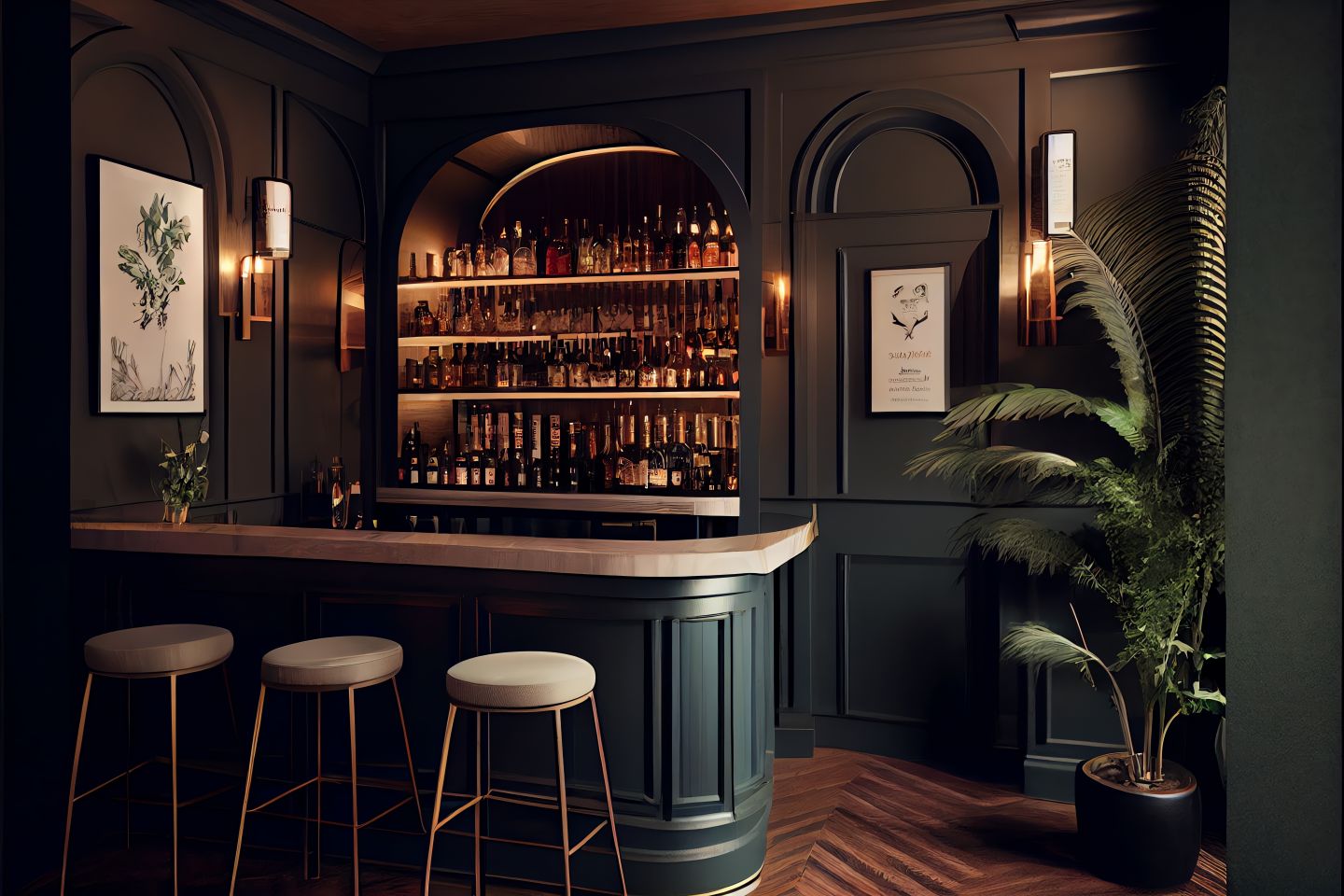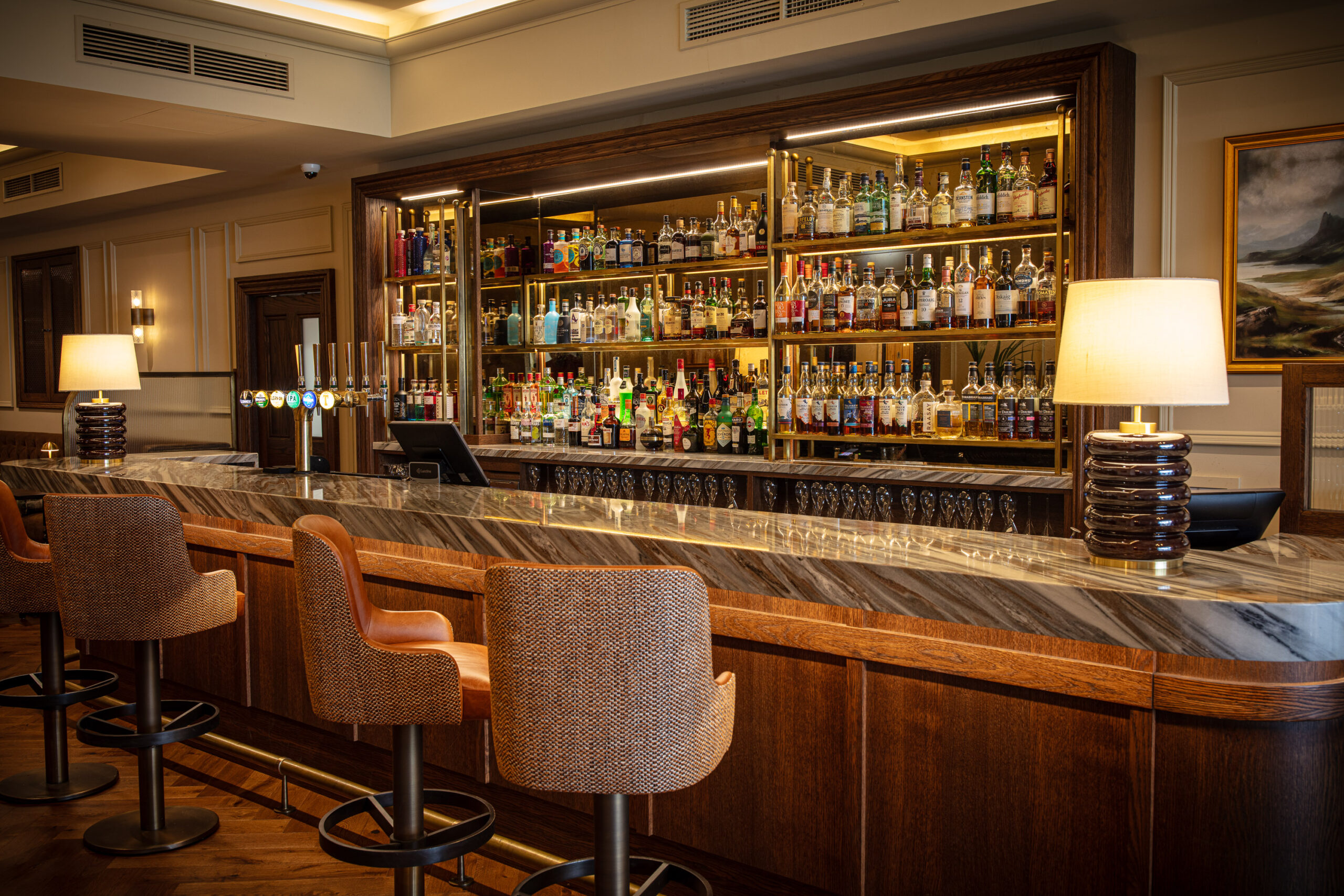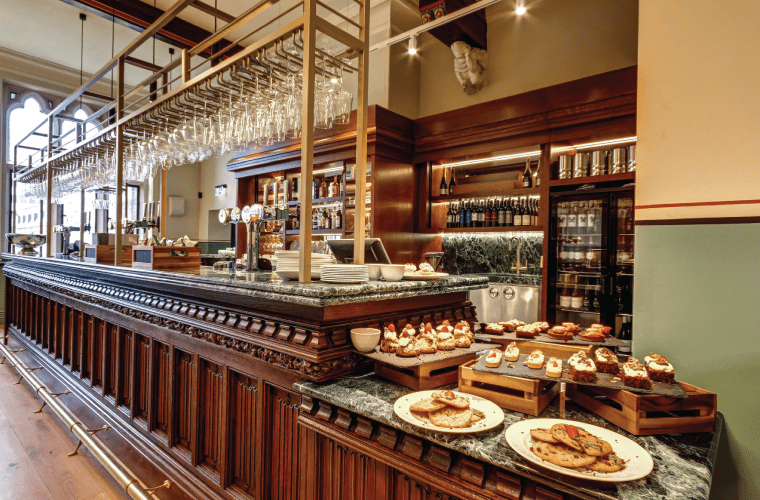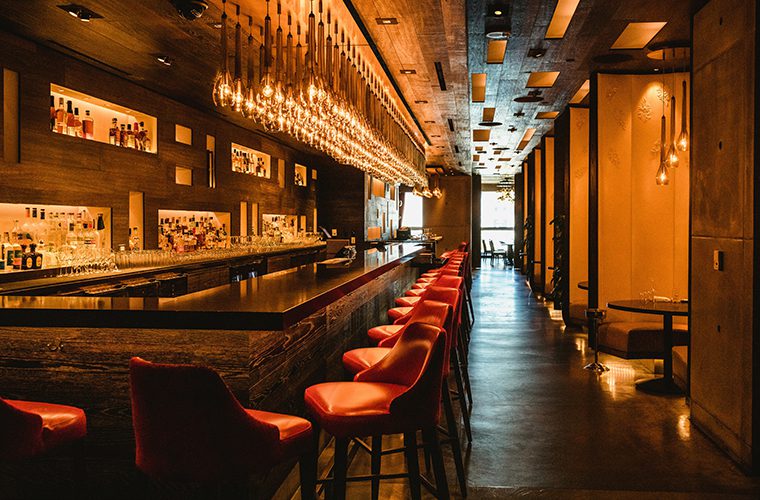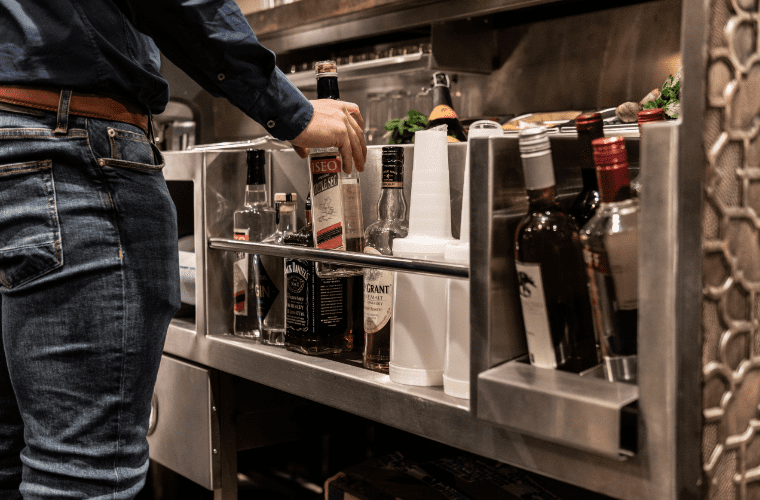
If your bar has been designed from the space up – rather than with equipment and bartender needs as the starting point with the bar itself then built around those considerations – it could be that your beverage team is struggling to be efficient in the face of poor lay-out. Having the equipment and bottles needed more than an arm’s reach away can hamper efforts to serve drinks fast, leave customers frustrated at waiting times and see profits stalled at less than optimal levels.
To ensure your bartenders are making and serving as many drinks as possible, without compromising on the customer experience, it’s worth considering the addition of a speed rail.
What is a speed rail?
A speed rail is a useful piece of bar equipment, designed to improve speed of service, functionality and provide an optimal workspace and layout for the bar tender. A speed rail sits behind the ice well, often running the length of it, and provides easy access to the most frequently required spirit bottles.
You can opt for either a single or a double speed rail, with the right option being dictated by the number of spirits your bar tenders will typically need access to. This will be determined by the complexity of your menu and the average number of drinks served per hour.
What should you look for in a speed rail design?
A speed rail is intended to provide easy, accessible and quick liquor storage. It places bottles within fingertip reach, so bar tenders can access the ingredients they need to mix drinks without having to turn their back on the customer or browse through shelves and move around the bar.
You therefore want to ensure that your speed rail can hold bottles safely and securely, be easy to grab and store a bottle in and keep bottles upright in a busy work environment. Our speed rails have a higher front panel so there is no danger of bottles falling out, without compromising on ease of access.
Material choice is another important factor. You want something that is easily wiped clean, hygienic and which won’t clang and clatter, adding to the decibel level as bottles are pulled out and quickly placed back on the rail.
Speed rail height also needs to be considered – you don’t want it so low that bar tenders have to stoop to reach the spirit they need, but you also don’t want it so high that it causes an obstruction behind the bar.
